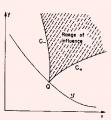
A Practical Introduction to Numerical Hydrodynamics
by Garrelt Mellema
Publisher: Leiden University 2003
Number of pages: 124
Description:
This text is an introduction to the field of numerical hydrodynamics. It will hopefully give you some insight in what is involved in such calculations. Numerical hydrodynamics is used in many parts of astrophysics. The applications we consider in this exercise are stellar, but this type of models could also apply to for instance galaxies, their cores, disks, and even clusters.
Download or read it online for free here:
Read online
(online html)
Similar books
 Images of the Solar Upper Atmosphere From SUMER on SOHO
Images of the Solar Upper Atmosphere From SUMER on SOHOby Uri Feldman, at al. - ESA Publications Division
Investigations of the heating of the corona and the acceleration of the solar wind are two of the prime scientific goals in studying the solar upper atmosphere with the Solar and Heliospheric Observatory (SOHO) of ESA and NASA.
(11973 views)
 Notes on Stellar Astrophysics
Notes on Stellar Astrophysicsby James N. Pierce - Minnesota State University
This book provides an introduction to the details of the structure, operation, and evolution of stars. It will be most useful to undergraduates in upper-level astronomy courses and graduate students taking Stellar Interiors or Stellar Atmospheres.
(9172 views)
 The Virial Theorem in Stellar Astrophysics
The Virial Theorem in Stellar Astrophysicsby George W. Collins, II - Pachart Pub. House
The virial theorem is extremely powerful in understanding problems of stellar astrophysics, but it is also poorly understood by many who study the subject. This book should be viewed as a guided introduction, punctuated by a few examples.
(13470 views)
 The First Stars
The First Starsby Simon C. O. Glover - arXiv
The author discusses our current understanding of the physical processes involved in the formation of Population III stars. He shows how we can identify the mass scale of the first dark matter halos to host Population III star formation.
(10726 views)